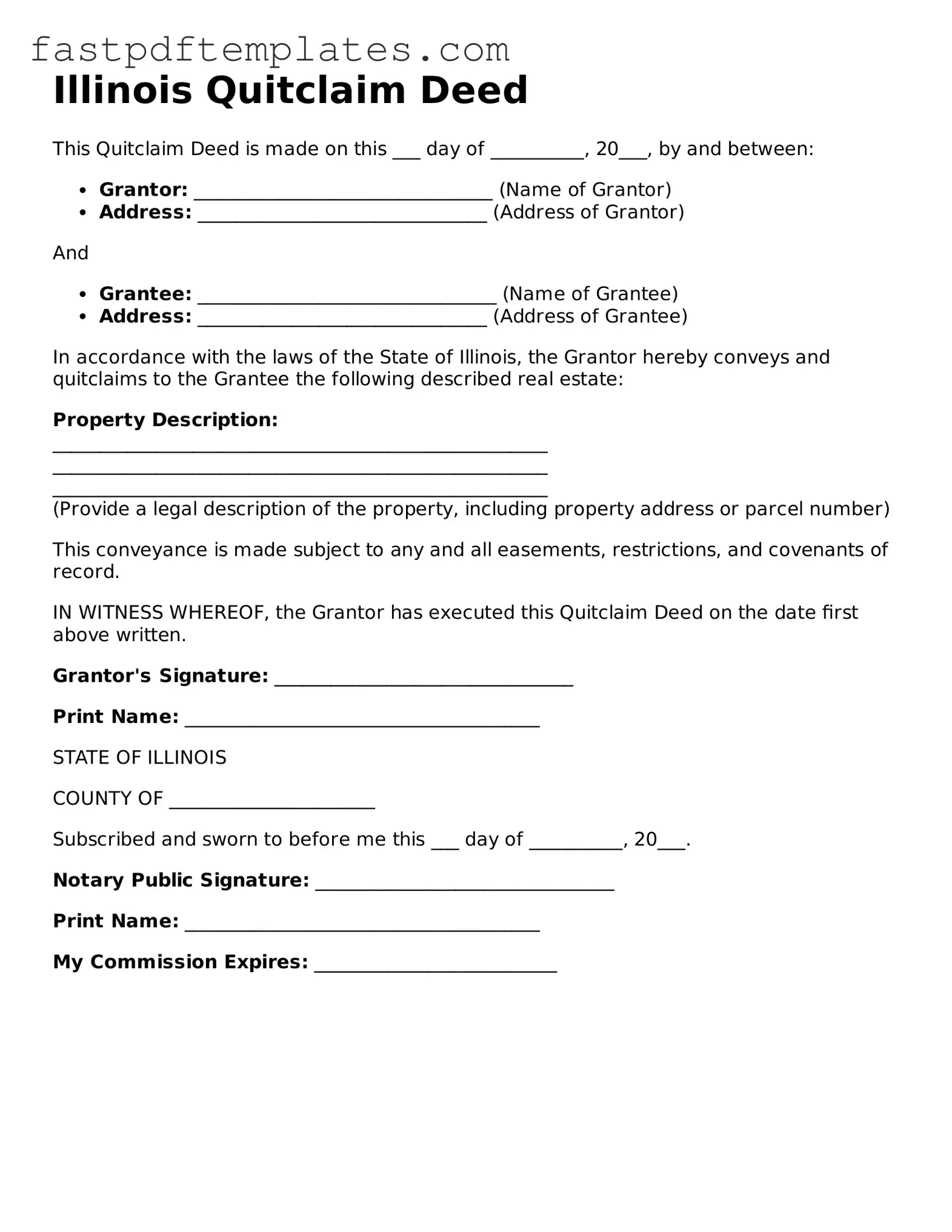Illinois Quitclaim Deed
This Quitclaim Deed is made on this ___ day of __________, 20___, by and between:
- Grantor: ________________________________ (Name of Grantor)
- Address: _______________________________ (Address of Grantor)
And
- Grantee: ________________________________ (Name of Grantee)
- Address: _______________________________ (Address of Grantee)
In accordance with the laws of the State of Illinois, the Grantor hereby conveys and quitclaims to the Grantee the following described real estate:
Property Description:
_____________________________________________________
_____________________________________________________
_____________________________________________________
(Provide a legal description of the property, including property address or parcel number)
This conveyance is made subject to any and all easements, restrictions, and covenants of record.
IN WITNESS WHEREOF, the Grantor has executed this Quitclaim Deed on the date first above written.
Grantor's Signature: ________________________________
Print Name: ______________________________________
STATE OF ILLINOIS
COUNTY OF ______________________
Subscribed and sworn to before me this ___ day of __________, 20___.
Notary Public Signature: ________________________________
Print Name: ______________________________________
My Commission Expires: __________________________
